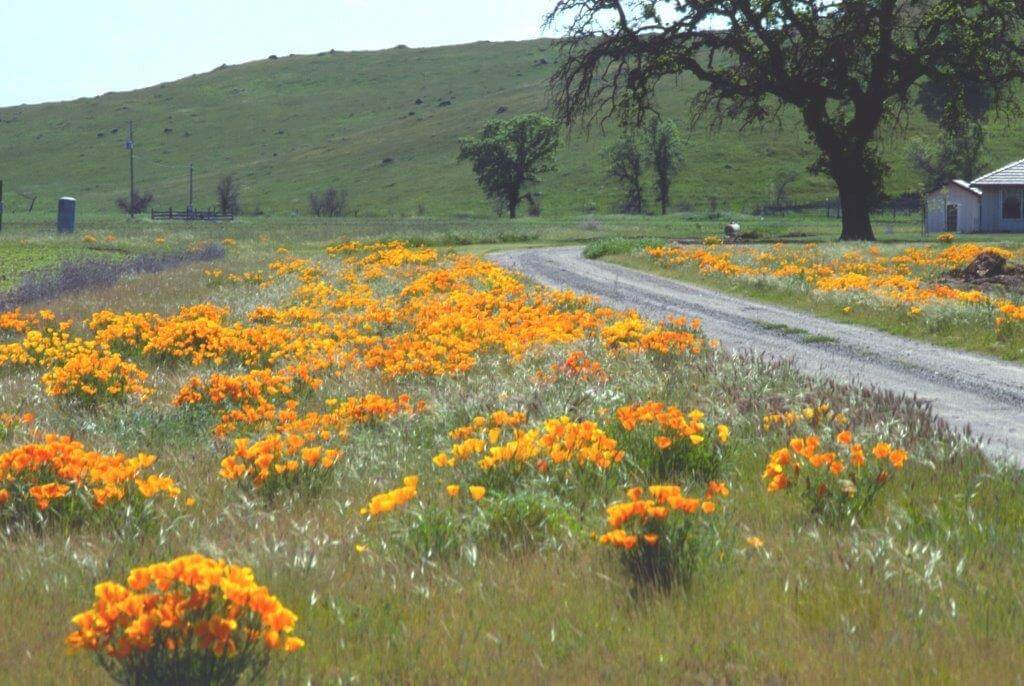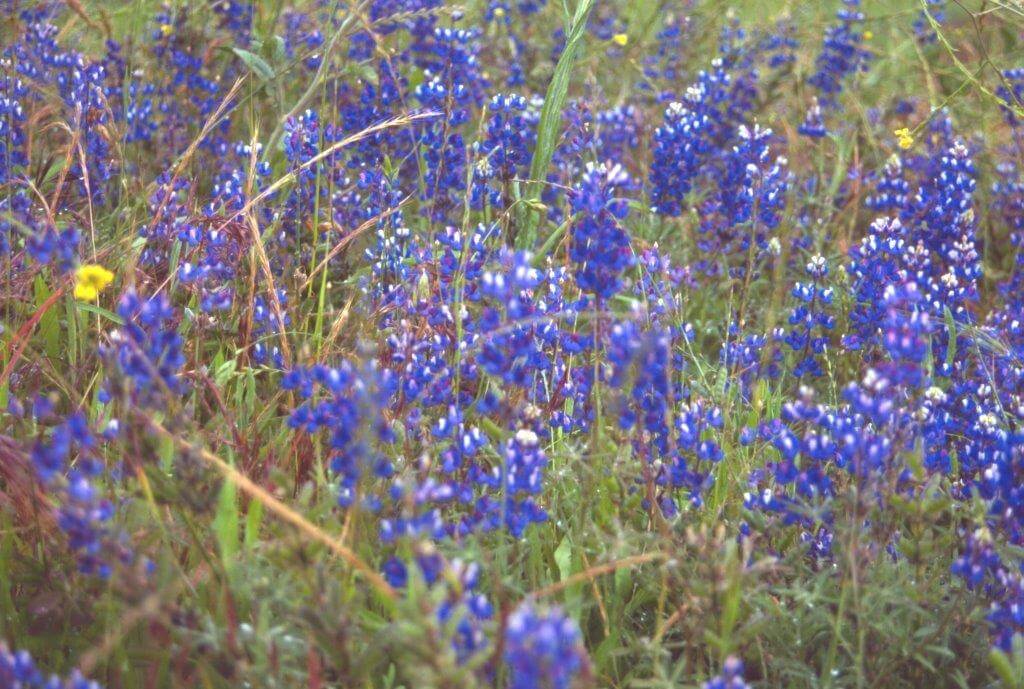Are you a failed wildflower grower? Growing California poppies (Eschscholzia californica), lupines, Coreopsis, and five-spot (Nemophila maculata) in the arid West is downright tricky. We sow them, and they refuse to sprout. It’s rare they return for a second season. So, what’s the problem?
First off, these western species are ephemeral annuals, meaning they live for just one season then go to seed before summer. Most of them need the full extent of our brief winter rains to get a head start on completing their life cycle prior to the long drought to come. Therefore they should be sown by Christmas to receive the rain that is essential for early spring bloom. Yet all too often they are sown during the planting frenzy of spring, which is far too late in much of the West. This leaves too short a season for them to become established and finish their life cycle.

Arid wildflowers flourish in the most unlikely places, along the edge of roads, perched on rocky cliffs and cascading downsloping hillsides. In all these locations fertility is scant, drainage very rapid and soils sometimes very shallow. These site preferences illustrate why sowing western wildflowers in fertile gardens can be an iffy proposition. If you manage a good show in year one, they will not naturalize unless conditions are perfect. In prepared gardens, soils are simply too rich, and there’s too much competition from other plants.

For best results, consider these seven simple tips to help you avoid some of the most common mistakes:
- Use new seed from local sources. (Wildflower seed can lose its viability quickly, so use seed packed for the current year.)
- Sow by Christmas; distributing seed early will give it the benefit of a very long wet season for growth. In many areas annual rain falls from December to May, so all their life cycle is geared specifically for this season.
- Apply the right amount of seed. Each seed mix will have its own designated application rate. A general rule of thumb is ¼ pound of wildflower seed will cover 500 to 1000 square feet. Make sure you get enough seed to produce the density of color you want.
- Scar the soil. Annual wildflowers love the disturbed ground, so make sure yours is freshly tilled or hand-worked with an iron rake prior to sowing. Seed gathers in these furrows. (The first spring after World War I ended, the battlefields of France bloomed solid red with corn poppies that thrived in soils churned up by trench warfare.)
- Cover seeds very lightly. Some wildflowers need light to germinate and remain dormant without it. Providing too much cover can spoil your efforts. Instead, sow the seed, then scatter Black Gold Garden Compost in a thin layer over the top. It too will migrate into the furrows to keep seed lightly moist.
- Weed to prevent competition. Spring weeds can devastate your wildflowers. As they begin to develop, pick out the grasses so they don’t compete for the same soil moisture as the wildflower seedlings.
- Provide water during dry periods. If rains are poor, use a sprinkler to create rain-like irrigation every couple of weeks during the winter and early spring.

Blue carpets of annual lupine love the gravelly ground and seeping moisture along the edges of roads.
Annual wildflowers for arid lands are great problem-solvers for barren soil around newly built homes or where the rocky ground makes it hard for more traditional plants to grow. They make a fine cover crop for seasonal bulbs, and they can help with erosion control when blended with native grass seed mixes and applied to disturbed slopes. Though they color a short season in spring, there is nothing more fantastic than a large swath of golden California poppies and Texas bluebonnet lupine studded with a dozen other beautiful wild species. But remember to plant when and where Mother Nature intended to meet that narrow window of opportunity defined by our challenging arid climate.
